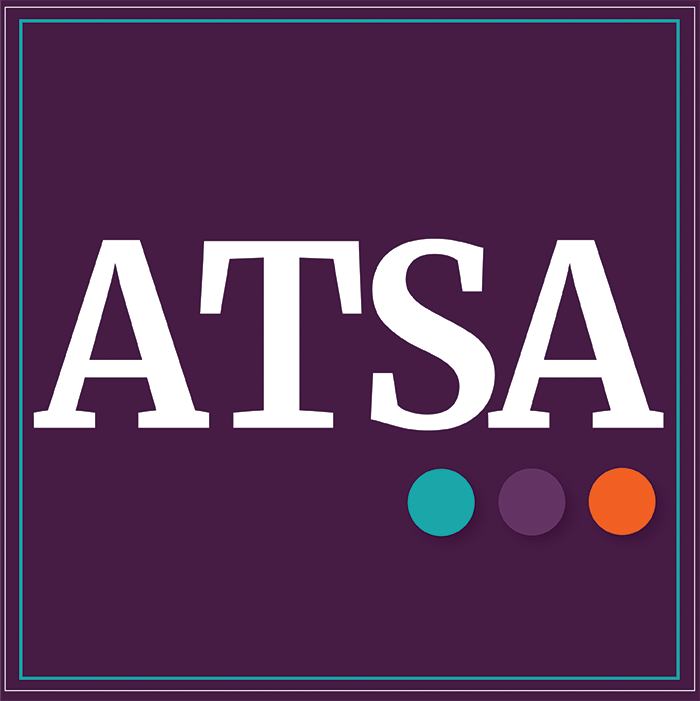ATSA President's Address: 2024-2027 Strategic Plan
Good afternoon – I am thrilled that you have taken the time to join us live or watch the recording as we provide exciting and important updates about ATSA.
I want to start with a reminder of the ATSA mission -Creating a world where ending sexual harm is a shared responsibility and an achievable goal. ATSA champions research and treatment, informs public policy, and advocates for best practice. Together, we can shift narratives on preventing sexual abuse perpetration.
At its core, a strategic plan reinforces the clarity of our mission and vision. It compels us to ask the essential questions: Why do we exist? What do we aim to achieve?
Without a strategic plan, it’s easy to spread ourselves too thin, trying to do everything at once. Strategic planning helps us prioritize our goals, ensuring that we focus our time, energy, and resources on what matters most. It provides a roadmap that guides our decision-making and keeps us aligned with our mission.
This clarity is crucial, not only for the ATSA staff, but also for our stakeholders – which includes you – as well as our partners, and our community. It is this shared understanding that galvanizes support and drives collective action.
Goals without action plans are just dreams. For each strategic goal, we need to develop detailed action plans that outline the steps, resources, timelines, and responsibilities required to achieve them. And we want your input on the action plan. By setting measurable goals, we can track our progress, assess our impact, and make data-driven decisions that enhance our effectiveness. This is where the rubber meets the road—where strategic vision turns into operational reality.
The accountability that comes from a strategic plan extends to every level of our organization. When we have clear goals and timelines, it’s easier to hold ourselves and each other accountable for delivering results. This transparency is key to building trust within the organization and with you and other stakeholders.
A strategic plan is also a powerful tool for building and maintaining relationships with our stakeholders. It communicates our long-term vision and demonstrates our commitment to achieving sustainable change. Funders, partners, and current and potential members are more likely to invest in an organization with a clear plan for the future. It shows that we are not just passionate about our work, but also strategic in our approach, which is crucial for securing the support we need to thrive.
I have attend two conferences recently that have reinforced the direction we're currently taking. In June, along with staff members Amber and Aniss, I attended the Envision Conference hosted by the Moore Center for the Prevention of Child Sexual Abuse at John Hopkins University in Washington, DC. A couple weeks ago, along with Amber, Past President Tyffani Monford, and Board Member Judith Zatkin, I attended the National Sexual Assault Conference (NSAC), also in Washington, DC. In hearing from those working on the front lines with people who have experienced sexual harm, they are interested in the work that we do to prevent sexual violence. They know the system is not working and that the justice system can fail both individuals who experience harm and who cause harm. Dozens of attendees attended our ATSA sponsored talks on perpetration prevention for individuals who have a sexual interest in children, a talk on what to know about the assessment, treatment, and management of youth and adults who cause sexual harm as well as a talk on campus perpetration prevention. We are being invited to tables and we are creating the tables to bring people together to discuss sexual violence prevention.
A well-crafted strategic plan is not rigid but adaptable. It allows us to pivot when necessary while staying true to our mission. This flexibility is vital in a nonprofit sector where agility can mean the difference between success and stagnation.
A strategic plan fosters growth—both in scale and impact. And it is not merely a document or a one-time event, but an ongoing process that guides our work, shapes our decisions, and amplifies our impact. It is a testament to our commitment to making the world a safer place, not just today, but for generations to come. Regularly reviewing our strategy ensures that we stay on track, learn from our experiences, and remain responsive to changes in our environment.
One of the presenters at NSAC offered a quote as part of their talk. They spoke about it in relation to their work with individuals who have experienced sexual violence and it immediately resonated with me as something that is true of the work that I do, and I anticipate each of you do every day. The quote she offered was from Angela Davis, “You have to act as if it were possible to radically transform the world. And you have to do it all the time.”. No matter how we choose to engage in the prevention of sexual violence, we all believe that we are able to help people transform. That we are able to advocate for system change. Whether we research, manage, teach, counsel, assess or a combination of that and more - We believe in the power of change. There are nearly 3,000 members of ATSA. This is such a passionate and dedicated membership that can partner with us during the organization’s evolution.
Strategic planning is not the responsibility of a single person or a select group—it is a collective effort. It requires input, collaboration, and commitment from everyone involved in our organization. I encourage each of you to actively participate in this process, share your insights, and contribute to the implementation of our strategic plan. Together, we can action on a plan that reflects our shared values, harnesses our collective strengths, and drives us toward a future where we achieve even greater impact.
